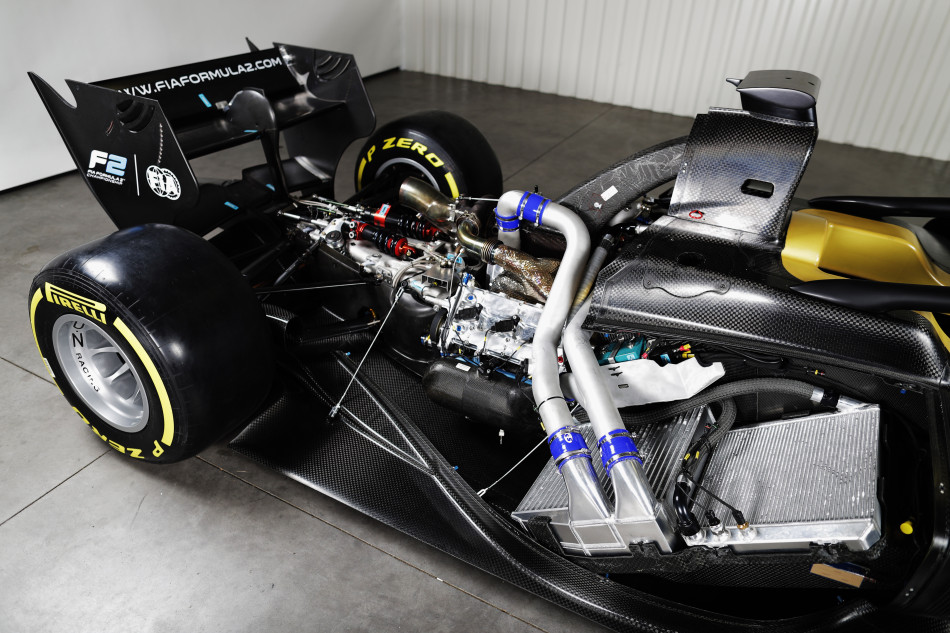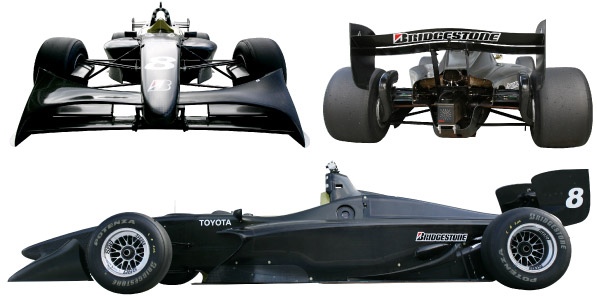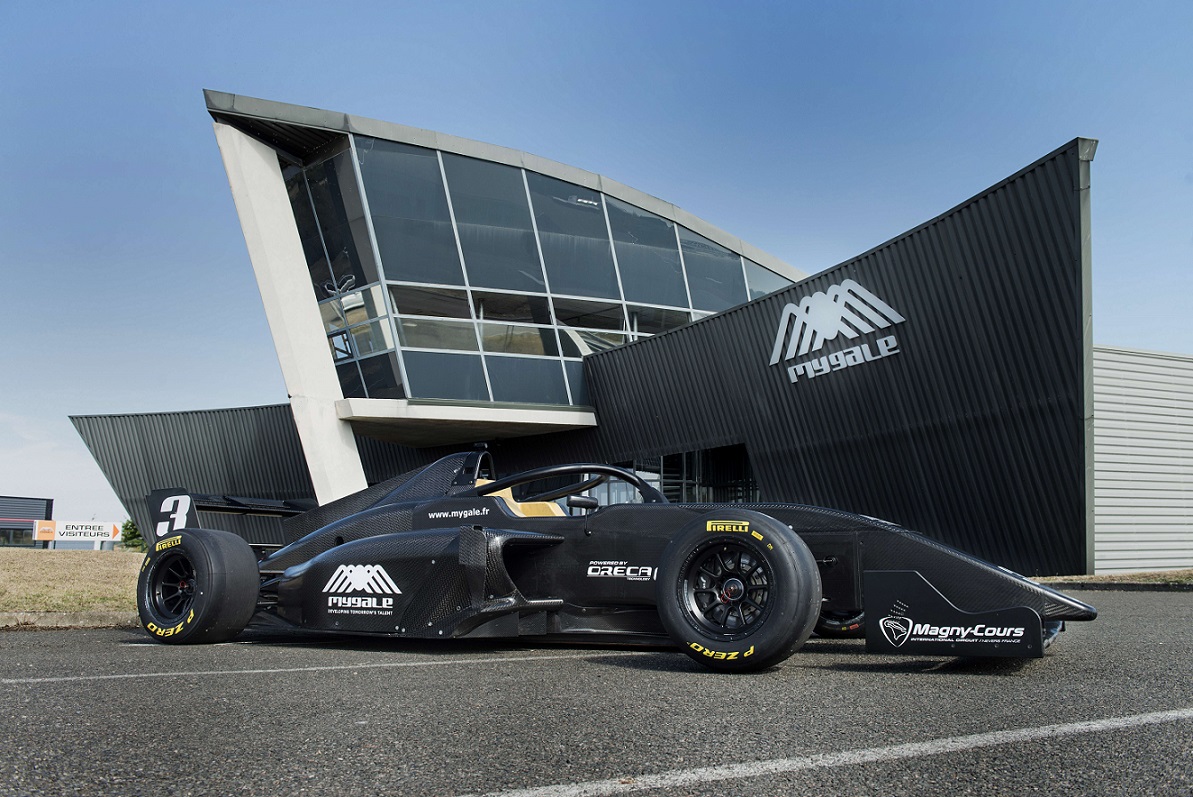
Yet, the current Formula 2 car, the Panoz DP01 champcar (and so on) seem to follow the the F1 cars of the 1980s and instead operate on the principle of having the minimum ground clearence as close to the ground as possible? I.e., a floor that is flat at it's lowest point, and not with a "tunnel" to increase the throat area at the point of minimum area, even though the DP01 and F2 cars were/are not restricted by regulation to mandate a flat floor.
The Formula 2 floor, if I am not mistaken doesn't have a step and the whole floor is really low to the ground like an 80's F1 car, with the diffuser starting well ahead of the rear axle:

(Dallara's Super Formula car seems to be similar to the F2 car too.)
Panoz DP01 floor (looking from the front of the car), it can be seen that it is largely flat underneath (though it seems to use a little bit of an F1-style inside step for no apparent regulatory reason, yet without any kind of step down or skirt at the outside edges [whose lack of presence suggests the step and higher ground clearance is not particularly a beneficial aerodynamic decision to have more throat area in the venturi]):

F1 teams themselves fitted simple skirt extensions (strangely absent on the Panoz!?) when they had to simulate 2017 downforce levels on their 2016 raked flat floor cars:

Whether this was just a quick and dirty, since the rules mandate an inside step and thus more minimum ground clearance anyway, or whether such a step-up and step-down is more broadly beneficial I don't know.
The Lotus 79 increased the area of floor low to the ground over the Lotus 78. It's clearly beneficial to have the lower pressure over a large area, and the 79's designers' seem to think it best the minimum ground clearance of the venturi tunnel should be just as low as the driver and engine (the lowest point was as low as practical really, even if there were further skirts that extended all the way down to the ground itself).

I was wondering conceptually, what the design from first principles should be (short of breaking out the CFD or a wind tunnel to work it out!)? Should there be a channel well above the ground to reduce tendency to stall, or is the lowest pressure achieved by having the lowest point of the floor/venturi as close to the ground as possible ? I guess the question is whether having more ground clearance to have more mass flow will actually reduce the pressure under the floor or not, and what is actually optimal..
The Swift Formula Nippon car is potentially an example of the former though I haven't been able to find a good picture of the exact shape of the floor. It seems (perhaps) to have step up and then a step down at the outside for a slightly higher minimum ground clearence of it's venturi tunnels.


Newey's Aston Martin Valkyrie seems to another that operates on having a substantial amount of ground clearance at the lowest point of the venturi tunnels. Seemingly it has around 20-30cm high channels around the outside of the driver compartment that then feed into the rear diffuser. Presumably with this larger ground clearance, and running lots of massflow through the car to get the low pressure, the down force is not so sensitive to ride height. Yet no (open reg, spec series) race cars seem to be designed this way!?


So much ground clearance at the lowest point of the Valkyrie's venturi tunnels!
If it's not too much to ask, I am curious about the entry ramp to the floor too. I would have thought a nice contraction (like in a wind tunnel) would be good^, plus the vortex generators. Yet that seems to be rarely used on free regulation cars (like F2).
^ (perhaps a larger inlet area if choosing to run a higher minimum ground clearence, for no stalling. But I can't quite conceptualise whether that would or would not, reduce the pressure under the floor overall!)
Below is the entry solution to floor on Lola's concept ground effects based Indycar.. There is plenty of intake area for the floor here, albeit no doubt with large vortex generator strakes like the Panoz to direct most of the gobbled up air out to the side and NOT underneath!

By contrast to the Lola, the design of the entry to the floor on mid-2000s F1 cars is so simple (as below). You had your splitter, your bargeboards and a nice simple hole between the splitter and start of the floor (behind the bargeboard) to direct air from the splitter to underneath the floor. Is the mid-2000s F1 design for the entry ground effects particularly good or bad (it must be a good solution right, they were such quick cars, and no wonder the likes of the F2 choose to use this type of layout despite no regulations compelling them too?

McLaren MP4-20 (primary?) air inlet for clean air from under the nose to the floor given by the hole behind the bargeboard
Thanks for your help!



